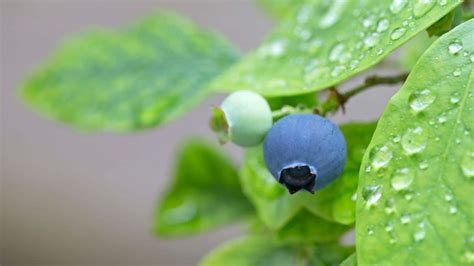How to Tell If Your Potted Blueberry Needs Water
Blueberries, with their delicious fruit and attractive foliage, are a popular choice for container gardening. However, keeping these plants thriving requires careful attention to their watering needs. Overwatering or underwatering can both lead to unhappy plants, so mastering the art of hydration is key. This guide will help you confidently determine when your potted blueberry needs a drink.
What are the Signs of a Thirsty Blueberry Plant?
Before diving into specific methods, let's look at the telltale signs your blueberry is parched. These visual cues can be your first line of defense against underwatering stress.
-
Wilting Leaves: Drooping, limp leaves are a classic sign of dehydration. While wilting can occur for other reasons (disease, pest infestation), it's often the first indication your blueberry needs water. Check for this throughout the plant, not just the top leaves.
-
Dry Soil: The most obvious indicator is the condition of the soil itself. Stick your finger about an inch or two into the soil. If it feels completely dry, it's time to water. Don't rely solely on the top layer; the soil deeper down might still be moist.
-
Leaf Color Change: As dehydration progresses, blueberry leaves may start to lose their vibrant green color, becoming dull or slightly yellowed. This is a more advanced sign and indicates the plant is experiencing significant water stress.
-
Reduced Fruit Production (for mature plants): If your blueberry bush is mature and producing fruit, a lack of water can lead to smaller berries, fewer berries overall, or even fruit drop.
How to Check Your Potted Blueberry's Moisture Level
Visual cues are helpful, but for a more precise assessment, you can employ these techniques:
1. The Finger Test:
This simple method is reliable and requires no extra tools. Stick your index finger about 1-2 inches into the soil. If it feels dry, it's time to water. If it feels moist, you can wait a bit longer.
2. The Weight Test:
Lift the pot. A dry pot will feel significantly lighter than a well-watered one. This is especially helpful for larger pots where the finger test might not reach the entire root zone.
3. Moisture Meter:
While not essential, a moisture meter can provide a more objective assessment. Simply insert the probe into the soil and read the moisture level. These meters vary in accuracy, so follow the manufacturer's instructions.
How Often Should I Water My Potted Blueberry?
The frequency of watering depends on several factors:
- Pot Size: Larger pots retain moisture longer than smaller ones.
- Pot Material: Terracotta pots dry out faster than plastic or resin pots.
- Climate: Hot, sunny, and windy conditions will dry out the soil more quickly.
- Soil Type: Well-draining soil dries out faster than heavy clay soil.
As a general rule, aim to keep the soil consistently moist but not soggy. During hot, dry spells, you may need to water daily or even twice a day for small pots. During cooler months, watering may be needed less frequently. Always check the soil moisture level before watering rather than sticking to a rigid schedule.
What Happens if You Overwater or Underwater Your Blueberry?
Both extremes can harm your plant:
Overwatering:
- Root Rot: Soggy soil deprives roots of oxygen, leading to root rot, a fatal condition.
- Yellowing Leaves: Excess water can cause nutrient deficiencies, resulting in yellowing leaves.
- Stunted Growth: Overwatered plants struggle to absorb nutrients, leading to stunted growth.
Underwater:
- Wilting: As mentioned above, wilting is the most common sign.
- Leaf Scorching: Severe dehydration can cause leaf edges to brown and crisp.
- Reduced Fruit Production: A lack of water stresses the plant and significantly reduces the yield of blueberries.
What type of water should I use for my potted blueberries?
While tap water is usually fine, rainwater is ideal. Avoid using water that is too high in chlorine or minerals, as this can damage the plant over time.
By consistently monitoring your blueberry plant and using the methods described above, you can ensure it receives the right amount of water, promoting healthy growth and a bountiful harvest. Remember to adjust your watering strategy based on the specific conditions of your environment and the size of your pot.

